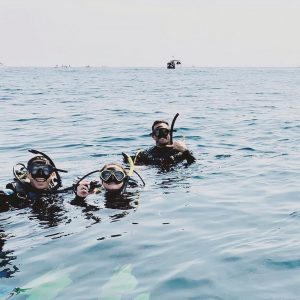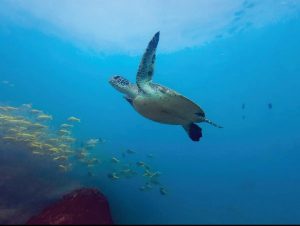Story by Scott Altman
Divers across the globe can attest that, among the 70% of the world covered in water, Queensland waters are one of the best for diving. The diversity of the teeming marine life found here has inspired many to dive in, including Jordan Abil, a long-time diver and certified instructor. In this interview, Jordan provides brief insights into the region’s recreational diving scene.
WHERE ARE THE BEST DIVING SPOTS IN QUEENSLAND AND SEQ?
Queensland has so many amazing dive sites with an abundance of marine life. For instance, South West Rocks off Rainbow Beach, in the Great Sandy Straits area, is the only known site in Queensland where grey nurse sharks mate and give birth. The S.S. Yongala, in the Townsville region, is one of the most amazing shipwreck dive sites in the world, teeming with a huge variety of marine life. The ex-HMAS Tobruk is another good site to dive sunken navy vessels.
The SEQ region also has many great dive sites. The ex-HMAS Brisbane is off the Sunshine Coast. Just off North Stradbroke Island, you can dive the Manta Bommie where you can see huge manta rays in summer and grey nurse sharks in winter. Flinders Reef, in the Moreton Bay Marine Park, is great for its tropical and temperate fish.
WHAT DO YOU ENJOY ABOUT DIVING?
The best thing about diving in Queensland for me is having so many different locations, reefs, wrecks and caves to be able to dive. So many people don’t realise this and will choose to dive elsewhere. There is an abundance of marine life ranging from tiny nudibranchs, octopus, crayfish, temperate and tropical fish, dolphins, humpback whales, manta rays and sharks. Every dive site provides something different and it doesn’t matter if you have dived the same site two or 50 times, you will always be surprised and see something different.
WHAT EXPERIENCES STAND OUT IN YOUR DIVING CAREER?
I will never forget diving with my first bull shark on the Ex-HMAS Brisbane. It was only a pup, but the size and width were really awesome to see! Diving with humpback whales will take the cake though. A mother and calf were swimming right over the dive site, and listening to them sing and communicate will forever be a part of me.
HAS COVID-19 AFFECTED DIVING PARTICIPATION?
Due to Covid-19, we have definitely seen an increase in people getting into diving. With lockdowns, travel and activity restrictions, a lot of people realised how amazing and easy it is to put on a wetsuit and get in the water to go for a dive. I would say we’ve seen a large increase in people learning to dive and a lot of people have realised that diving in Australia and Queensland, specifically, is absolutely phenomenal.
WHAT IS THE DEMOGRAPHIC OF DIVERS IN THE REGION?
Diving is spread across a number of ages, which allows for huge variation. As a scuba diving instructor, I have taught people as young as 12 and have worked with people in their 80s. I think a lot of people that get into diving are people who love the water and have a genuine interest in the underwater world.
WHAT ESSENTIAL GEAR DO YOU NEED TO DIVE?
The first thing I recommend for anyone when purchasing any dive equipment is a decent mask that fits your face. There’s nothing worse than having a mask that fogs up or leaks! A good wetsuit and fins early on are also a great investment as you will feel more comfortable and confident in the water.
WHAT TIPS CAN YOU GIVE TO PEOPLE LOOKING INTO DIVING?
I recommend that you find a dive centre or store to call home and join their community. You should also do some research before buying any gear and make sure to ask questions as much as possible. Additionally, something I found quite enjoyable when I was learning to dive was writing out my logged dives with little stories, pictures and maps. It’s not only a log for your number of dives, but a little memory log as well.
Published in print January-March 2022































